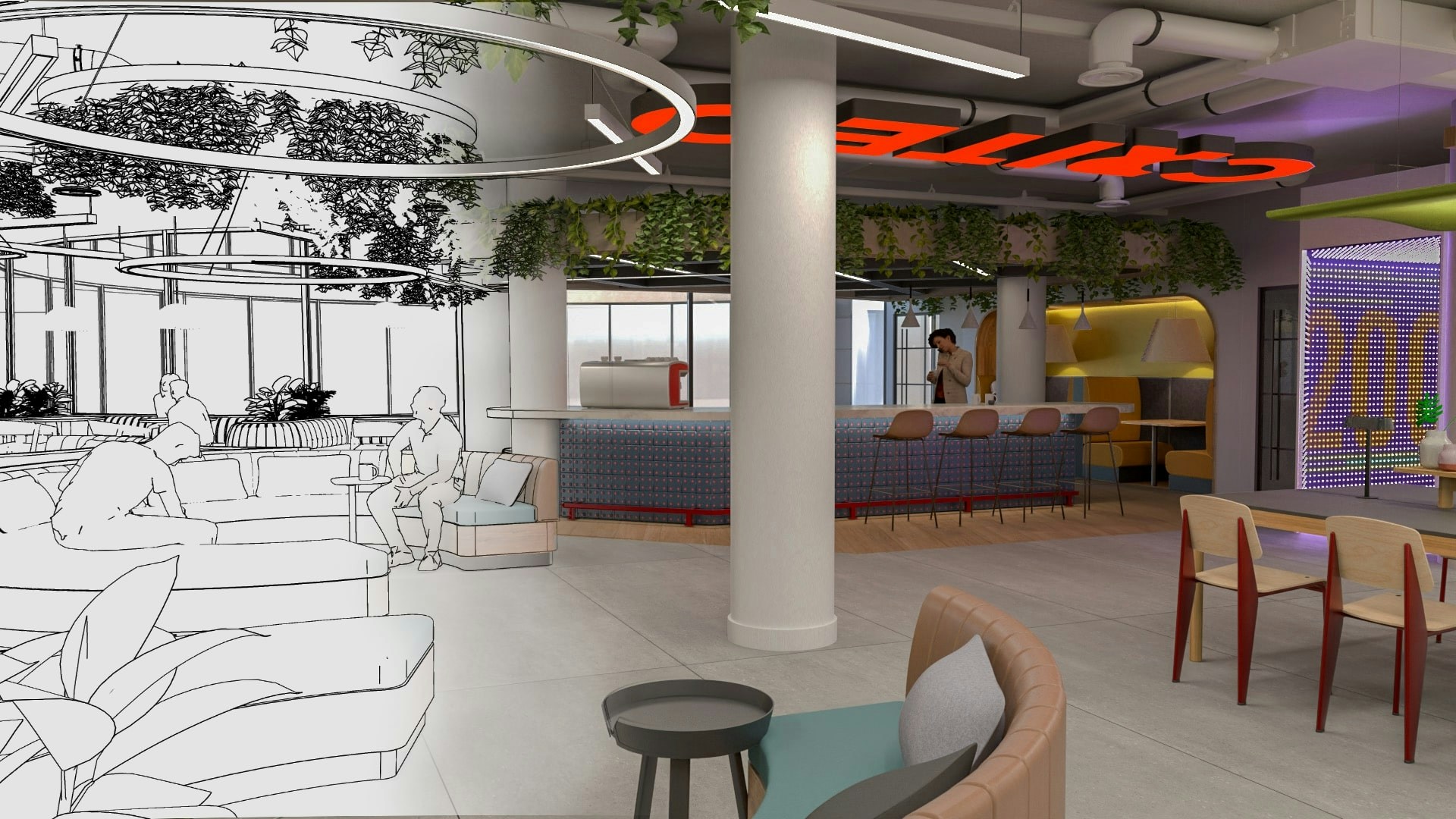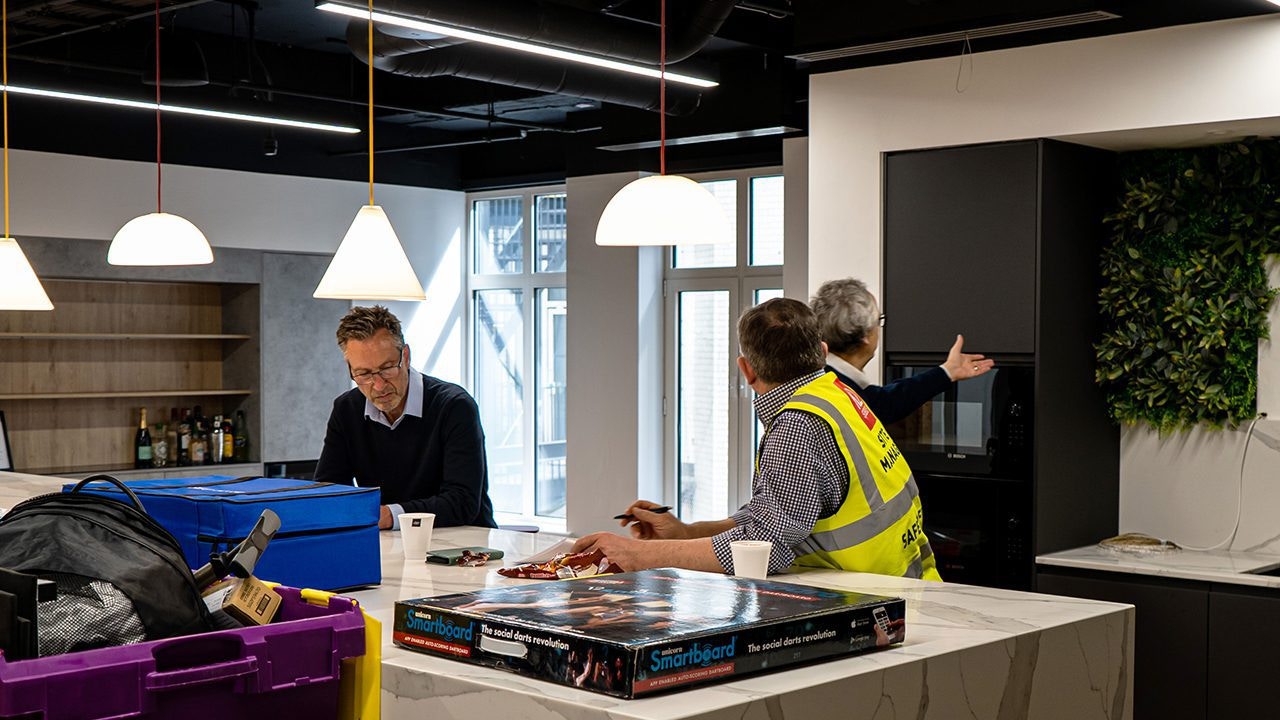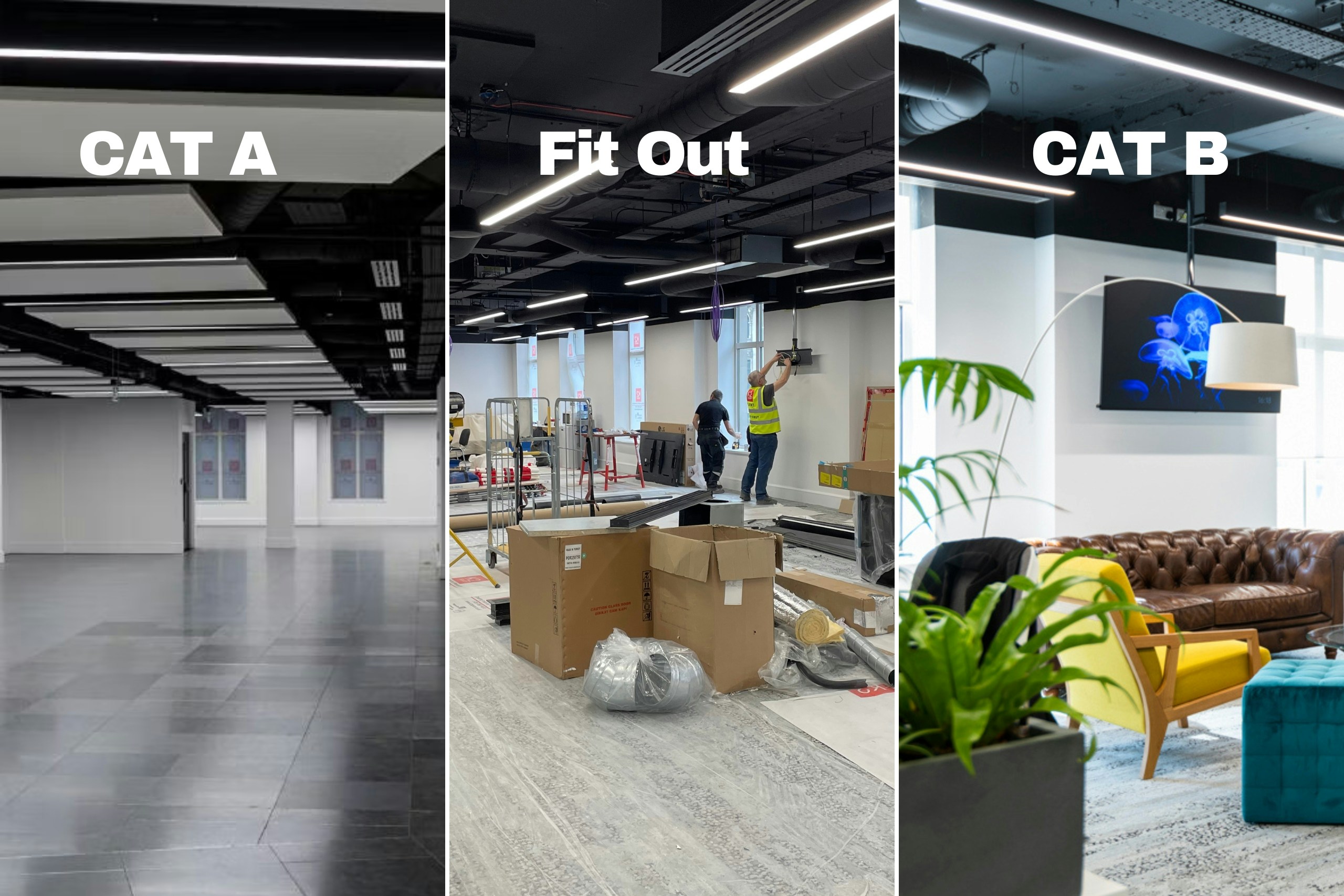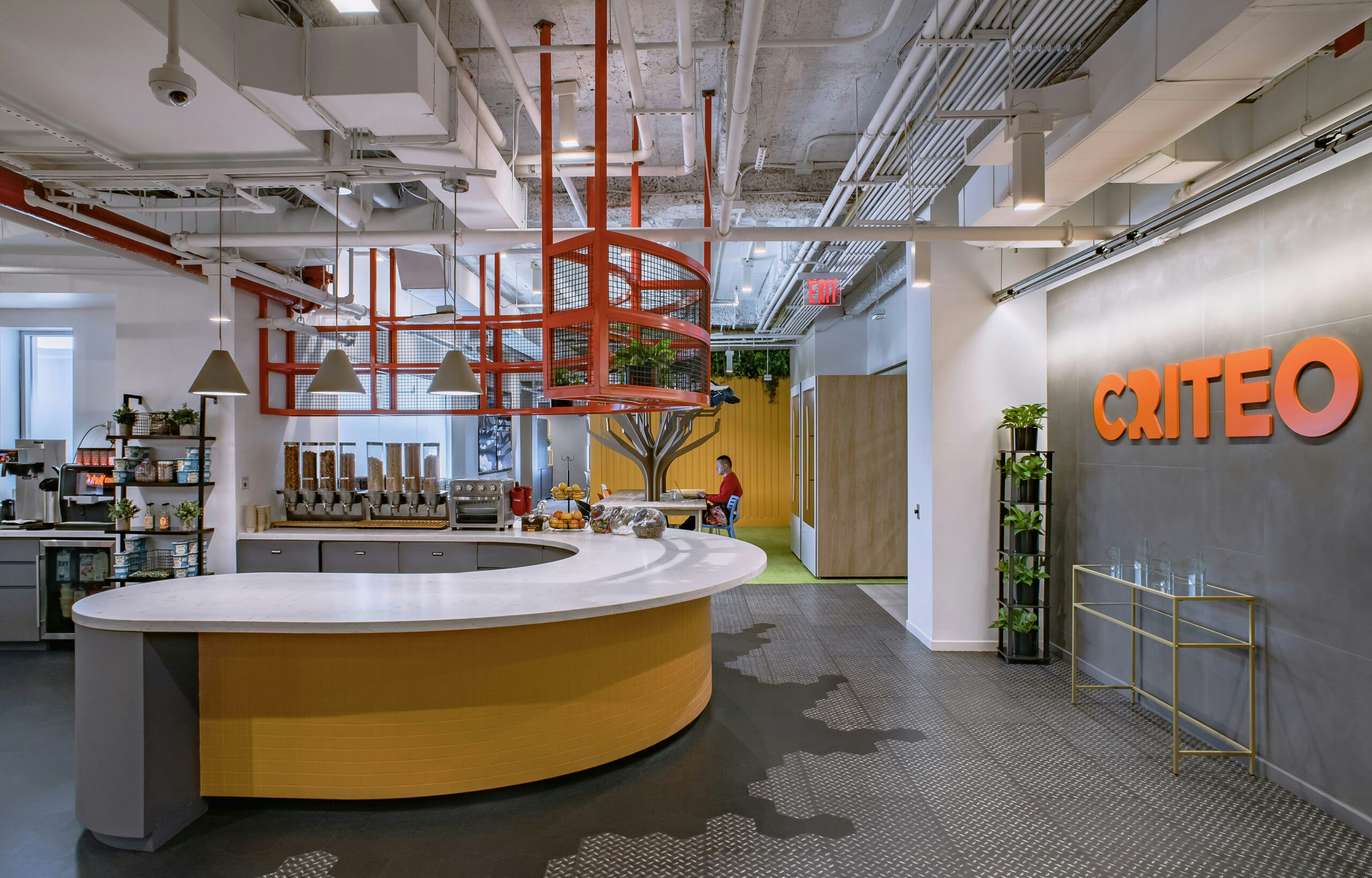What is an Office Fit-Out?
An office fit-out is the transforming of an empty or basic office shell into a fully functional and operational workspace which is ready for occupation by a company and its staff, and that aligns with a company’s specific needs and brand identity. This includes everything from the installation of facilities like bathrooms to raised floors, and the creation of meeting rooms, breakout areas, and kitchens.
During the office fit-out process, a bare, uninhabitable area is transformed into a fully functional workplace, replete with furniture, HVAC, tea points, AV, workstations, and other necessities.
The significance of a well-executed office fit out by a team of fit out experts is imperative to the continued success of business. It plays a vital role in enhancing employee productivity, morale, and overall workplace well-being.
By thoughtfully designing and equipping an office space with the right mix of work areas, collaborative spaces, and amenities, businesses can foster a more engaged and motivated workforce. Moreover, a workspace that accurately reflects a company’s brand identity can leave a lasting impression on clients and visitors, reinforcing the brand’s values and professional image.
From the installation of essential services like electrical, plumbing, and HVAC systems to the selection of finishes and furniture that reflect the brand’s palette and values, every element of an office fit-out needs to be meticulously planned and executed. The goal is to create a functional office space that enhances productivity and embodies the company’s unique brand identity.











